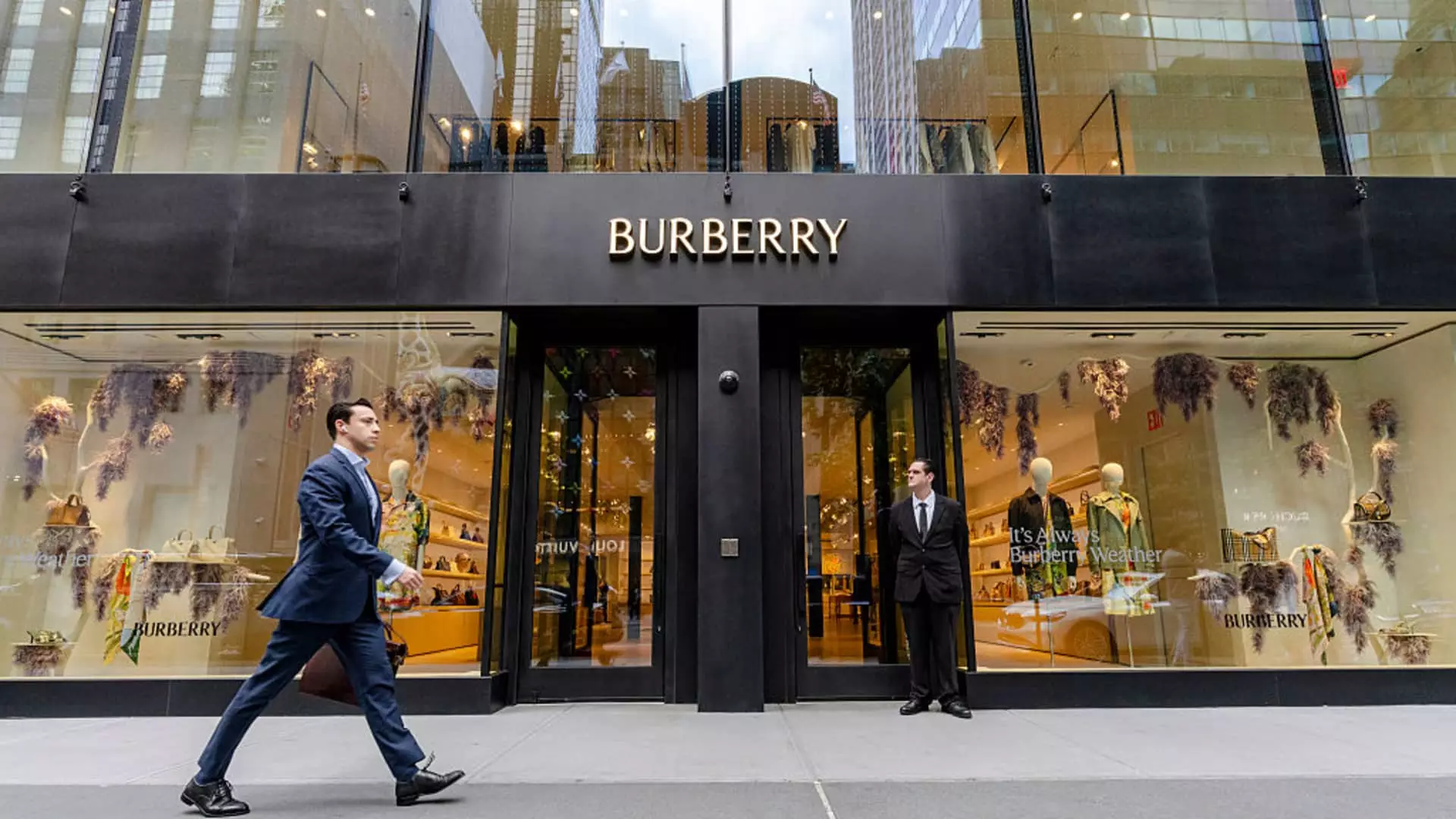In recent months, Burberry has managed to carve out a modest glimmer of optimism amidst a sea of economic turbulence and shifting consumer preferences. The luxury brand’s renewed focus on its British heritage — especially its iconic trench coats and signature check pattern — appears to resonate with American consumers more than expected. This engagement suggests that heritage branding still holds power, but only under the right circumstances. For Burberry, it’s a double-edged sword; nostalgia obsessed with authenticity can falter quickly if not supported by consistent innovation and strategic market adaptation. While the 4% sales increase in the Americas might seem promising, it masks the underlying fragility of the brand’s recovery, revealing a painstakingly slow turnaround that could be easily undermined by external headwinds, notably U.S. tariffs and geopolitical uncertainties.
A Patchwork of Regional Trends and What They Reveal
Burberry’s quarterly report shows nuanced regional variations that tell a larger story about the global luxury landscape. Sales rallied slightly in Europe, the Middle East, India, and Africa, but the Chinese market — traditionally a powerhouse for luxury brands — continued to stumble, declining 5%. This is emblematic of a broader slowdown in global luxury consumption that cannot be ignored. Tourism-dependent economies like Japan also saw declines, indicating that the revival of luxury demand remains fragile and uneven. What emerges from these mixed signals is that Burberry’s strides are not universal but localized efforts that depend heavily on specific geographic and demographic segments. This inconsistent performance underscores the difficulty in crafting a unified brand experience across diverse markets, especially when economic conditions vary so dramatically from region to region.
The Challenges of a Turbulent U.S. Market
The United States represents nearly a fifth of Burberry’s revenue, making its performance a critical barometer of the brand’s overall health. Yet, recent headwinds—particularly the looming threat of tariffs—cast a long shadow over prospects for a genuine upswing. While Burberry claims to have adjusted its supply chain and pricing sensitivity to mitigate these risks, the effectiveness of such measures remains to be seen. Tariffs are not just a minor inconvenience but a strategic obstacle that can erode margins and distort consumer perceptions of value. It’s curious how a brand that has thrived on exclusivity and premium pricing now finds itself embroiled in pragmatic recalibrations just to maintain its foothold. This shift from luxury aspirationalism to pragmatic cost management marks a worrying transition and raises questions about the sustainability of Burberry’s current trajectory.
Leadership and Strategic Overhauls: A Necessary but Risky Cure
The appointment of Joshua Schulman marked a pivotal point — perhaps a last-ditch effort to reinvigorate Burberry’s fading allure. His stated goal of “course correcting” the brand’s direction, combined with aggressive cost-cutting measures like job cuts and efficiency programs, signals a recognition that the company’s previous strategies were insufficient. Yet, wholesale layoffs and cost savings can be double-edged. They may boost short-term financials but risk alienating core customers or diluting the brand’s cachet if not executed with finesse. It remains to be seen whether Schulman’s vision — leveraging Britishness and classic products while adjusting marketing and pricing to modern sensibilities — will create a lasting renaissance or simply serve as a temporary Band-Aid. The luxury market is increasingly consumer-driven and value-conscious, making it hypocritical to dismiss the importance of innovation in favor of heritage alone.
The Broader Industry Context: Hope or Illusion?
While Burberry’s recent numbers seem to signal a small victory, they should not overshadow the broader industry challenges that loom large. The luxury sector’s resilience is being tested by global economic headwinds, including inflation, changing consumer priorities, and geopolitical conflicts. The threat of U.S. tariffs adds an unpredictable element that could undo much of the progress made. What’s more, the Chinese market’s sluggish recovery points to a fundamental issue: the global luxury boom was never sustainable if it depended heavily on tourism and transient markets. As the industry faces these headwinds, the narrative of a gradual recovery appears overly optimistic. Burberry’s cautious optimism may be justified, but it underplays the complexity of the macroeconomic environment, which could easily turn hopes of a turnaround into a disappointing reality. Achieving sustainable growth in a volatile world will require far more than heritage branding and incremental moves; it demands genuine innovation, strategic agility, and a repositioning that aligns luxury with contemporary values.

